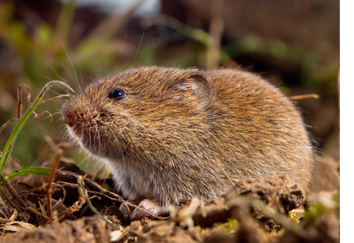Expert Strategies for Vole Control and Prevention
Expert Strategies for Vole Control and Prevention
Blog Article
Comprehensive Overview to Effective Vole Bug Control: Invasion Identification and Treatment Approaches
In the realm of efficient insect control, vole invasions present a special challenge that requires a calculated strategy. These little rodents, often incorrect for mice, can ruin gardens, grass, and plants if left unattended. Recognizing the indications of vole existence and applying targeted treatment approaches are crucial parts of an effective pest monitoring plan. By exploring the subtleties of vole behavior, recognizing key signs of invasion, and evaluating a variety of control alternatives, one can develop a thorough approach to combat these evasive pests.
Understanding Vole Behavior
Vole habits is identified by their burrowing practices and rapid recreation prices, making them a difficult pest to manage successfully. Their rapid reproductive price further complicates control efforts, with females qualified of creating several litters in a solitary year, each having numerous spawn.
Comprehending vole behavior is vital for effective insect control methods. By recognizing their burrow locations, checking feeding locations, and implementing targeted control approaches, such as trapping or environment alteration, vole invasions can be managed effectively.
Indications of Vole Problem

Avoidance Approaches
Carrying out efficient prevention strategies is crucial in reducing vole problems and guarding plant life from their devastating feeding habits. To stop vole problems, it is essential to begin by eliminating potential food sources and sanctuary.
Frequently checking the home for signs of vole task, such as runways and burrow openings, is critical for very early discovery and prompt activity. If vole task is thought, think about utilizing repellents or traps strategically put near their pathways. Employing all-natural predators like owls or snakes can also aid keep vole populaces in check. By applying a combination of these avoidance approaches, home owners and gardeners can efficiently safeguard their vegetation from vole damages.
Non-Lethal Control Methods
To efficiently manage vole populaces while focusing on humane approaches, non-lethal control approaches offer functional solutions for decreasing vole damages in landscapes and informative post yards. One reliable technique is the use of physical obstacles such as equipment cloth or cord mesh to protect at risk plants. These barriers can be buried a minimum of 12 inches curved and deep at a 90-degree angle to avoid voles from burrowing underneath. Additionally, environment adjustment can deter voles by reducing their chosen food resources and concealing places. Maintaining a well-mowed lawn, eliminating debris, and keeping greenery trimmed can make the setting much less appealing to voles.

Lethal Control Options
One reliable method for resolving vole problems in landscapes and yards entails the critical use of lethal control alternatives. When faced with an extreme vole invasion that non-lethal techniques have stopped working to have, implementing dangerous control measures becomes important. One typically utilized lethal control alternative is the usage of snap traps. These catches are developed to swiftly and humanely kill voles upon activation, making them a preferred choice for numerous garden enthusiasts and landscaping companies. To enhance the performance of snap catches, it is suggested to position them in areas where vole task is high, such as along paths or near burrow entrances. One more deadly control alternative is the utilization of harmful lures specifically created to target voles. These baits include poison that is consumed by the voles, bring about their eventual demise. However, caution should be exercised when utilizing hazardous lures to stop harm to non-target pets or pet dogs. Overall, when using dangerous control options, it is vital to do so responsibly and in conformity with local laws to successfully handle vole problems.
Final Thought
In conclusion, reliable vole bug control calls for a detailed understanding of vole habits, identification of indications of problem, implementation of prevention methods, and utilization of both dangerous and non-lethal control techniques. By combining these techniques, people can site here properly handle vole populaces and secure their residential property from damage. It is essential to deal with vole infestations without delay to stop further problems and decrease the influence on the surrounding atmosphere.
Offered the complex tunnel systems and fast reproduction prices particular of voles, recognizing the indications of vole infestation becomes crucial in reliable bug control. One of the primary indicators of vole presence is the visibility of surface paths or trails in turf or snow, usually about 1-2 inches wide, developed as voles travel between their burrows and food resources.To successfully manage vole populations while focusing on gentle approaches, non-lethal control approaches offer functional options for minimizing vole damage in landscapes and yards.One effective approach for attending to vole infestations in yards and landscapes entails the tactical use of lethal control choices. vole yard damage.In final thought, efficient vole pest control requires an extensive understanding of vole actions, recognition of signs of invasion, implementation of avoidance strategies, and application of both non-lethal and lethal control techniques
Report this page